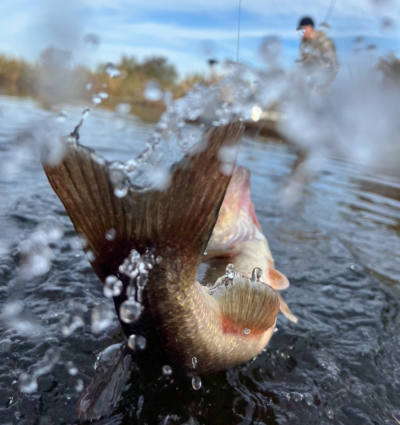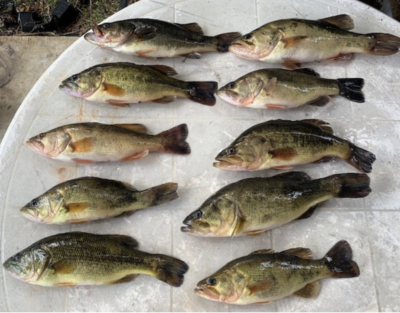Bass Fishing Before and After a Cold Front
Keith Lusher 03.07.24

March can pose a big problem for bass anglers. For starters, bass are in a transition phase which makes them harder to pattern. In addition, the cold fronts that pass through can shift temperatures from the 70s to the 40s in a matter of hours.
For Daniel Sissac of Pearl River, LA, these temperature swings have forced him to fish in two entirely different ways depending on which side of the cold front he’s fishing. “It never seems to stay warm or cold long enough to develop a pattern. Once I figure out a pattern, the temperature changes and causes me to have to change my technique,” said Sissac. In March, there are two patterns that you’ll need to pay attention to.

Mild Pattern
After a cold front, the temperatures slowly warm up. After about three days the bass are feeding in a mild pattern. Sissac said he targets shallower water when the temperatures warm. For those fishing rivers and estuaries that contain grass, Sissac recommends fishing the outer edge of the grass line that develops just off of the bank. “There’s a line of grass that grows about 5 to 10 feet off the shoreline. The grass often forms a wall that divides the shoreline into two sections. On the milder days, when the temperatures get into the 60s, the fish react on the inside of the grass in between the grass and the shoreline,” Sissac said.
As far as lures go, Sissac said you can’t beat a good ole’ plastic worm. He uses a Texas-rigged worm with a 1/32 oz bullet weight. Sissac recommends using two colors: purple and blue. He also recommends using a fast retrieve “Bass love a fast retrieve between the grass and the bank because they see their window to attack the lure getting smaller as the lure gets closer to the grass,” he said.
Cold Pattern
After a cold front has passed through, the temperatures often plummet which sends bass into more of a winter pattern. Sissac said the bass tend to be on the deeper side of the grass line between the drop-offs and the vegetation.
When fishing the deep side of the grass, Sissac recommends positioning your boat near the grass to fish the grass line horizontally. “If I’m fishing the outside of the grass, I like to cast parallel along the grass line because the lure remains in the strike zone longer,” he said.

When fishing the outside of the grass line, Sissac sticks with a Texas-rigged worm, but uses a lighter 1/8 oz. weight. If that doesn’t work, he recommends slow-rolling a jerkbait or spinnerbait. While fishing the outer edge of the grass line is his go-to method of bass fishing when it’s cold, Sissac said it’s best to keep an eye out for sun-soaked wood if the sun is shining brightly. “The wood soaks in the heat and that is transferred to the water which attracts baitfish on cold days,” Sissac said.
These two patterns should continue to transpire throughout March but as the weather warms, Sissac said the bass will start moving up to spawn. That’s when he switches over to more of a bank-beating style of fishing.

